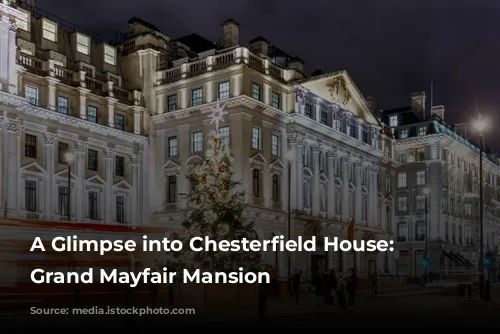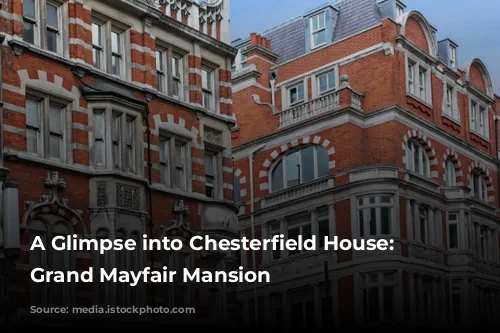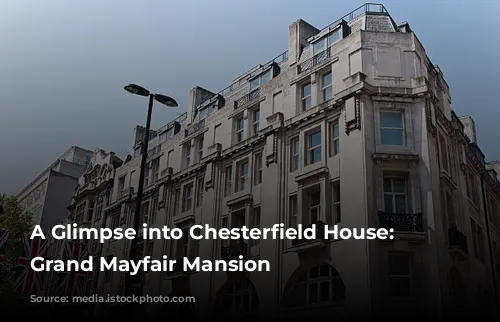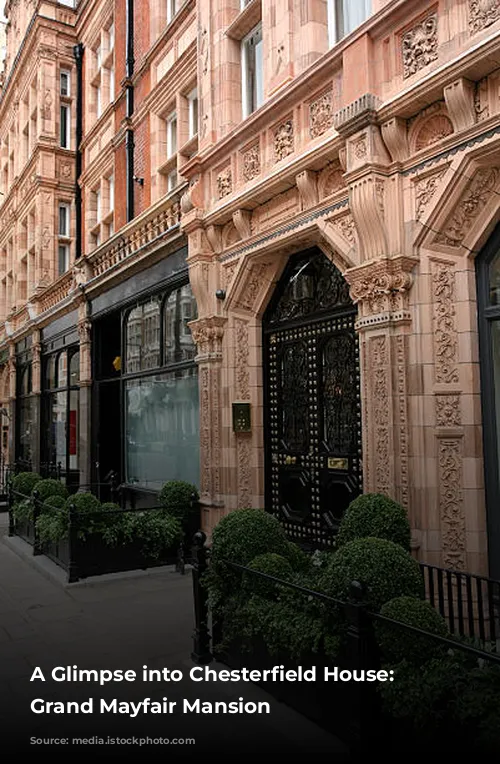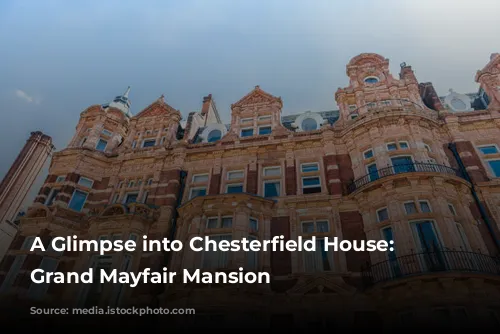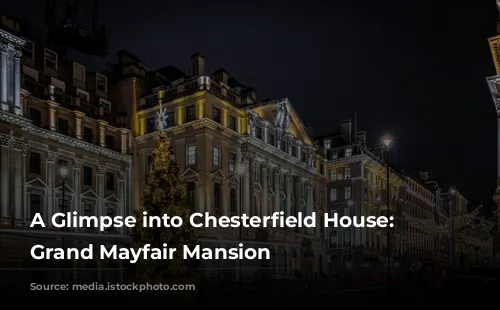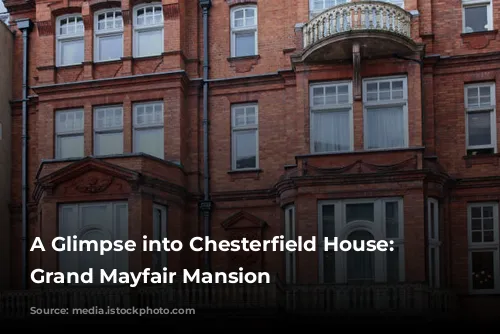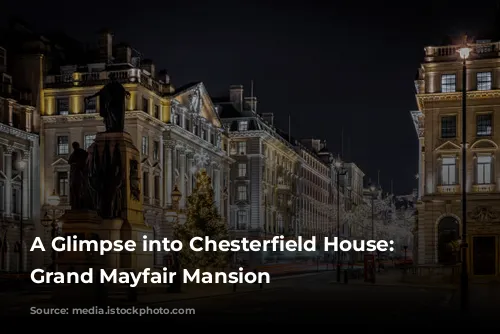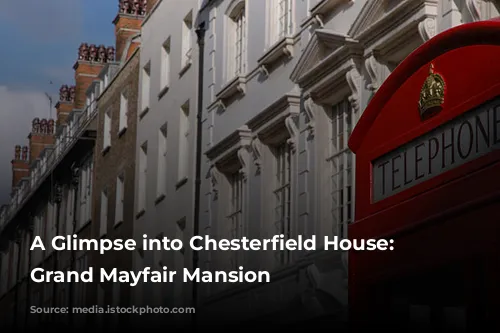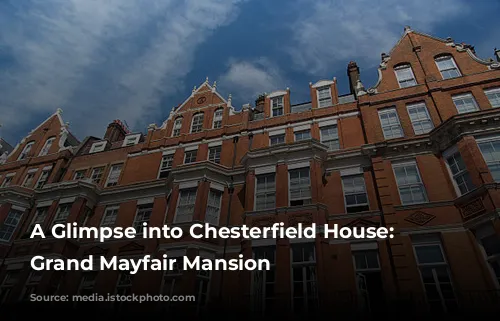Chesterfield House, a magnificent London townhouse, was a testament to the grandeur of the 18th century. Built between 1747 and 1752 by the influential Philip Stanhope, 4th Earl of Chesterfield, it embodied the architectural styles of its time – Palladian exterior and Baroque interior. Situated in the prestigious Mayfair district on the north side of Curzon Street, the house stood between South Audley Street and the now aptly named Chesterfield Street. Sadly, in 1937, the house was demolished, leaving behind only a block of flats bearing its name.
A Parisian Ambiance in London
The French travel writer Pierre-Jean Grosley, in his book “Londres” (1770), described Chesterfield House as the equal of the Parisian “hôtels particuliers” of the nobility. This comparison highlights the house’s elegance and grandeur, placing it firmly among the most impressive residences of its time.
From Humble Beginnings to a Lavish Abode
Chesterfield House was built on land owned by Richard Howe, 1st Earl Howe, by the architect Isaac Ware. The Earl himself described his progress in building the house in his “Letters to His Son”, writing on March 31, 1749, that he had finished only his boudoir and library. He proudly boasted that the boudoir was “the gayest and most cheerful room in England” and the library “the best”. He also mentioned his flourishing garden, a rare sight in London, which was sure to be a delightful retreat.
A Literary Paradise: The House’s Library
The Quarterly Review in 1809 provided a vivid picture of Chesterfield’s library, a room considered “the finest in London” even decades after the Earl’s death. The walls were adorned with classical literature and portraits of famous French and English authors. Above the bookshelves, Horatian lines inscribed in large capitals encircled the room, creating a literary atmosphere. The library was filled with busts of orators, vases, bronzes, and statues, creating a harmonious blend of classic and romantic aesthetics.
A Legacy of Grandeur and Collections
Many of the house’s furnishings and decorative elements were acquired from the sale of Cannons, the mansion of James Brydges, 1st Duke of Chandos. Chesterfield purchased the columns, marble staircase, portico, and railings from the auction. He further enriched his home with treasures from the Houghton Hall sale, including an 18-candle copper-gilt lantern from the collection of Robert Walpole.
A Glimpse into the Past: The House’s Interiors
Edward Walford’s detailed description of Chesterfield House in his “Old & New London” offers a fascinating glimpse into the house’s interior. The grand marble staircase, a remnant of Cannons, led to a music room with gilt fiddles adorning the walls. The drawing room, known as the “French room,” evoked the elegance of Versailles with its panelling, furniture, and multiple looking glasses.
The library remained a focal point, a place where Lord Chesterfield sat and wrote. The house also included an antechamber, where aspiring guests would wait for an audience with the Earl.
A House of History and Transformation
Chesterfield House passed through various hands throughout its history. Charles Magniac purchased the house in 1869 to prevent its demolition and later reduced the grounds to build Chesterfield Gardens. In 1919, the house was acquired by Viscount Lascelles, who later married Princess Mary in 1923. The couple resided in the house until 1931.
Chesterfield House, a grand London townhouse, stood as a testament to the elegance and lavishness of the 18th century. It housed a magnificent library, elegant interiors, and a history rich with notable figures. Though demolished in 1937, its legacy lives on in the memories of those who experienced its grandeur and the block of flats bearing its name.
